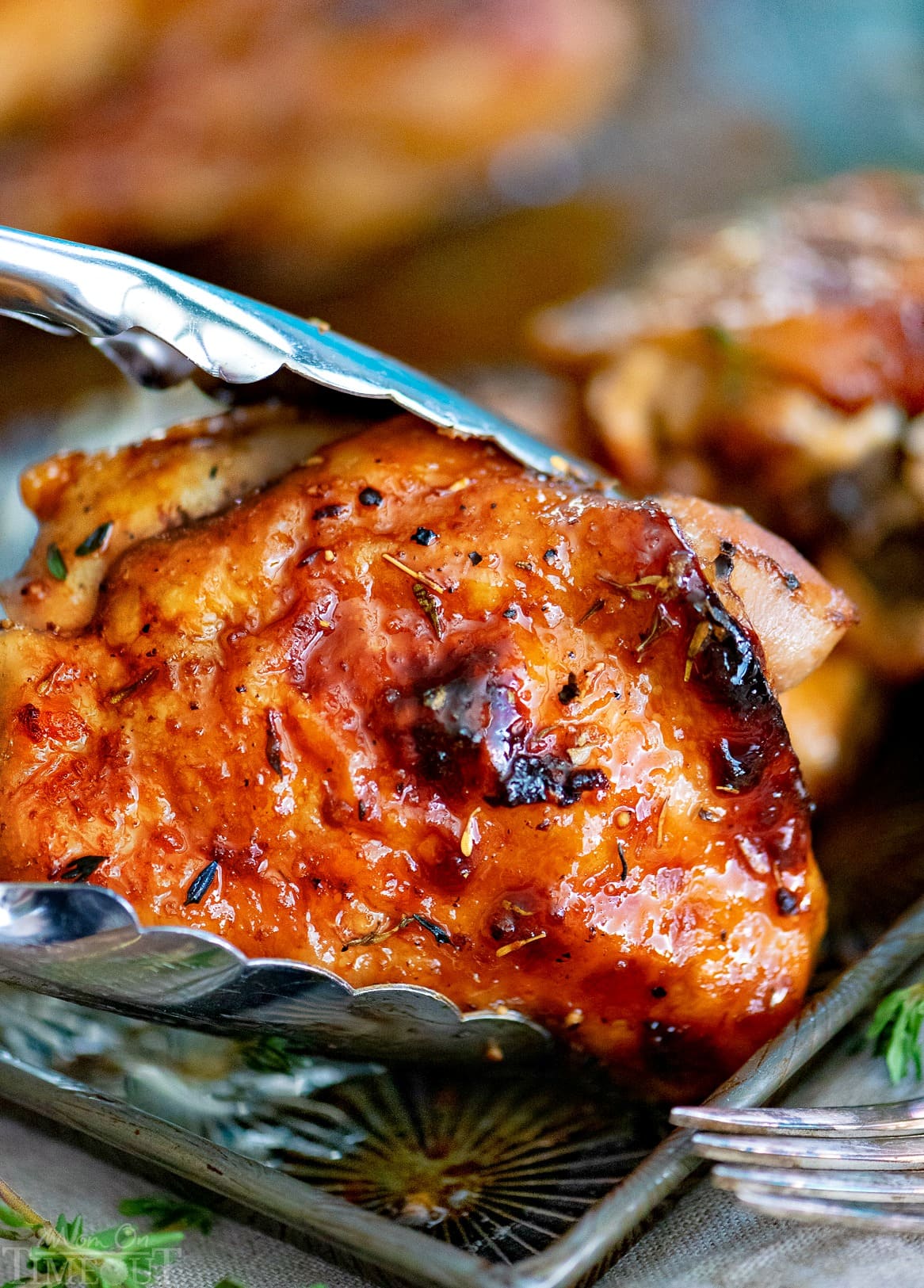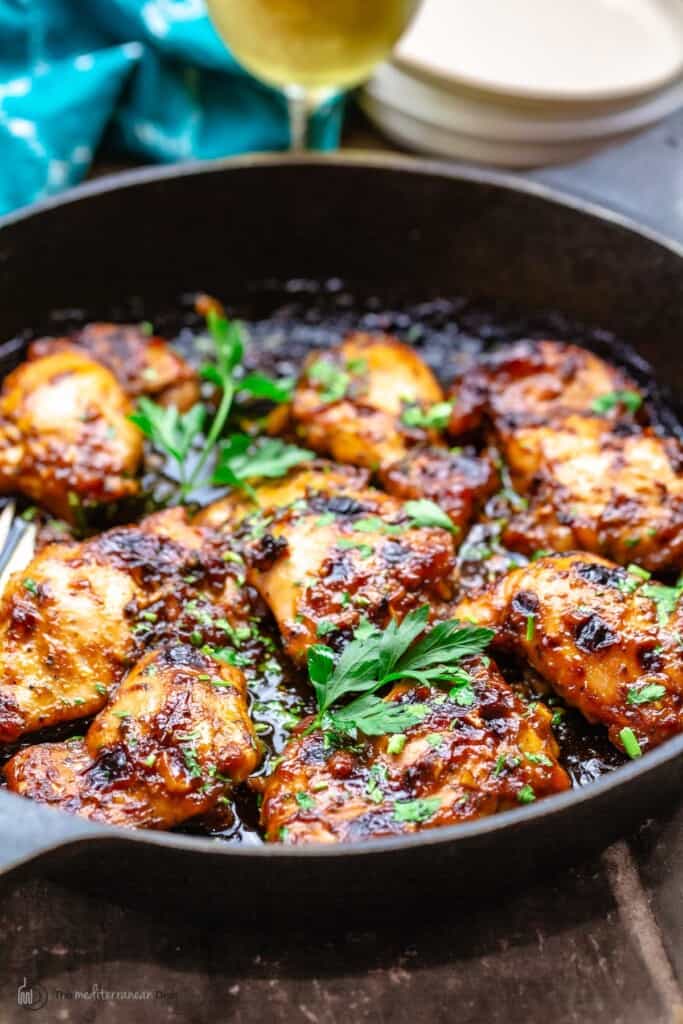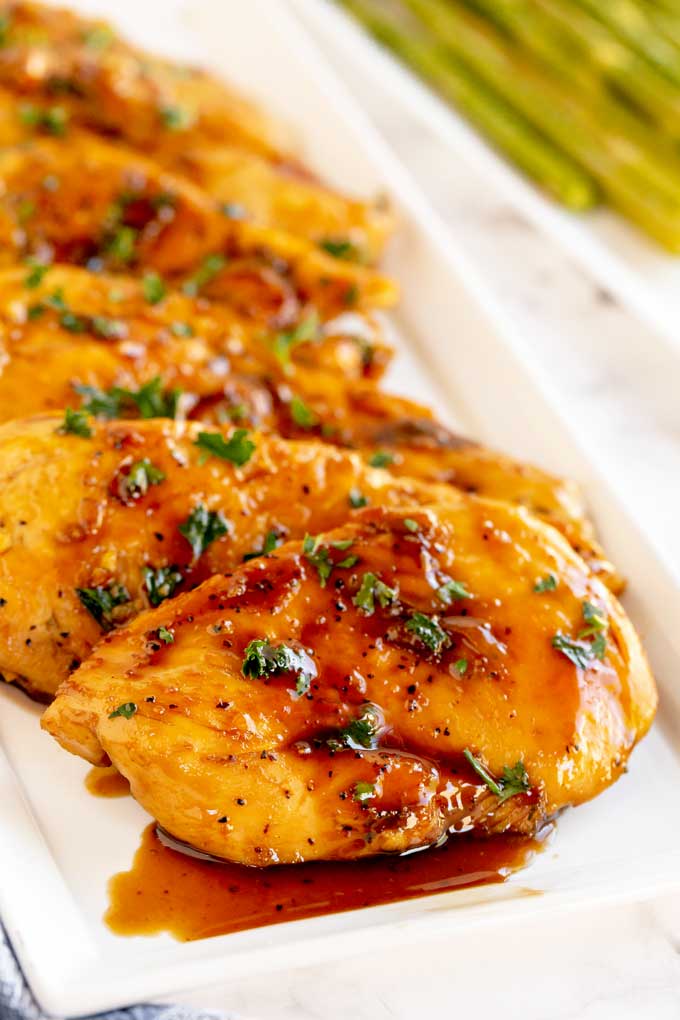Balsamic Glazed Chicken: A Symphony of Sweet and Savory

Balsamic glazed chicken is a dish that transcends simple culinary categorization. It’s not just a recipe; it’s an experience. The rich, tangy sweetness of the balsamic glaze perfectly complements the savory succulence of the chicken, creating a harmonious blend of flavors that satisfies both the palate and the soul. This article will delve deep into the art of crafting the perfect balsamic glazed chicken, exploring variations, techniques, and the science behind this culinary masterpiece.
Understanding the Key Ingredient: Balsamic Vinegar
The cornerstone of this dish, balsamic vinegar, is far more than just a simple cooking ingredient. Its complex profile is the result of a lengthy aging process, often spanning several years, sometimes even decades. Traditional balsamic vinegar, originating from the Modena and Reggio Emilia regions of Italy, is made from cooked grape must (unfermented grape juice) that is aged in a series of wooden barrels, typically made from different types of wood like oak, chestnut, cherry, and mulberry. This process allows the vinegar to slowly develop its characteristic dark brown color, syrupy consistency, and intense, complex flavor profile, marked by notes of sweetness, acidity, and subtle fruitiness.
While traditional balsamic vinegar is undeniably superior, good quality commercially produced balsamic vinegars are readily available and can produce excellent results. When selecting a balsamic vinegar for your glaze, look for one that is labeled as "aged" or "reserve," indicating a longer aging process and a more concentrated flavor. Avoid vinegars that are overly sweet or have artificial additives.
The Science of the Glaze:
The magic of the balsamic glaze lies in the reduction process. By simmering the balsamic vinegar, you concentrate its flavors and transform its texture. The water evaporates, leaving behind a thick, syrupy glaze with intensified sweetness and acidity. The Maillard reaction, a chemical reaction between amino acids and reducing sugars, also plays a significant role, contributing to the rich brown color and complex aroma of the glaze. This reaction occurs at high temperatures, further enhancing the flavor profile.
The addition of other ingredients, such as honey, brown sugar, or even a touch of Dijon mustard, can further enhance the glaze’s complexity and balance its sweetness and acidity. These additions also contribute to the glaze’s thickening properties.
Preparing the Perfect Balsamic Glaze:
Creating a truly exceptional balsamic glaze requires attention to detail. Here’s a step-by-step guide:
Ingredients:

- 1 cup high-quality balsamic vinegar
- 2 tablespoons honey (or brown sugar, or maple syrup – adjust to taste)
- 1 tablespoon Dijon mustard (optional, adds a nice tang)
- 1 teaspoon fresh thyme leaves (optional, adds an herbaceous note)

Instructions:
- Combine ingredients: In a small saucepan, combine the balsamic vinegar, honey (or alternative sweetener), Dijon mustard (if using), and thyme leaves (if using).
- Simmer and reduce: Bring the mixture to a gentle simmer over medium heat. Reduce the heat to low and let it simmer uncovered, stirring occasionally, for 15-20 minutes, or until the glaze has thickened to your desired consistency. The longer it simmers, the more intense the flavor will become. Be careful not to let it boil vigorously, as this can cause it to burn.
- Cool and store: Remove the glaze from the heat and let it cool completely. Store it in an airtight container in the refrigerator for up to two weeks. The glaze will thicken further as it cools.

Cooking the Chicken:
The method of cooking the chicken significantly impacts the final result. Here are a few popular methods:
1. Pan-Seared Chicken:
This method delivers a beautifully browned, crispy skin and juicy meat.
- Season the chicken: Season chicken breasts generously with salt, pepper, and any other desired herbs or spices.
- Sear the chicken: Heat a tablespoon of olive oil in a large skillet over medium-high heat. Sear the chicken breasts for 3-4 minutes per side, until golden brown and nicely seared.
- Bake or braise: Transfer the skillet to a preheated oven at 375°F (190°C) and bake for 15-20 minutes, or until the chicken is cooked through. Alternatively, you can reduce the heat to low, cover the skillet, and braise the chicken for 15-20 minutes until cooked through.
- Glaze the chicken: During the last 5 minutes of cooking, brush the chicken generously with the balsamic glaze.
2. Baked Chicken:
This method is ideal for larger batches and requires minimal hands-on time.
- Prepare the chicken: Season chicken breasts or thighs as desired.
- Bake: Place the chicken in a baking dish and bake at 375°F (190°C) for 20-25 minutes, or until cooked through.
- Glaze: During the last 10 minutes of baking, brush the chicken with the balsamic glaze.
3. Grilled Chicken:
Grilling adds a smoky char to the chicken, enhancing the flavor profile.
- Prepare the chicken: Marinate chicken breasts or thighs in a simple marinade (e.g., olive oil, lemon juice, garlic) for at least 30 minutes.
- Grill: Grill the chicken over medium heat for 6-8 minutes per side, or until cooked through.
- Glaze: Brush the chicken with the balsamic glaze during the last 2-3 minutes of grilling.
Serving Suggestions:
Balsamic glazed chicken is incredibly versatile. It pairs beautifully with a variety of side dishes:
- Roasted vegetables: Roasted asparagus, Brussels sprouts, or sweet potatoes complement the glaze’s sweetness and acidity.
- Pasta: Serve the chicken over pasta with a simple tomato sauce or creamy pesto.
- Rice: Fluffy rice or quinoa absorbs the glaze’s delicious flavors.
- Salad: A fresh green salad with a light vinaigrette provides a refreshing contrast to the richness of the chicken.
Variations and Experimentation:
The beauty of balsamic glazed chicken lies in its adaptability. Feel free to experiment with different flavors and techniques:
- Spice it up: Add a pinch of red pepper flakes to the glaze for a touch of heat.
- Citrus zest: Incorporate orange or lemon zest into the glaze for a bright, citrusy note.
- Herbs: Experiment with different herbs like rosemary, oregano, or sage.
- Fruit: Add a touch of chopped figs or cranberries to the glaze for an extra layer of sweetness and texture.
Conclusion:
Balsamic glazed chicken is a dish that rewards both the cook and the diner. Its seemingly simple preparation belies the depth of flavor and complexity achieved through the careful reduction of the balsamic glaze and the thoughtful choice of cooking method. With a little practice and experimentation, you can master this dish and create a culinary experience that will impress even the most discerning palates. So, gather your ingredients, embrace the process, and prepare to be amazed by the symphony of sweet and savory flavors that await you.

Video tentang Balsamic Glazed Chicken: A Symphony of Sweet and Savory
Penutup
Therefore, we hope this article has provided valuable insights on Balsamic Glazed Chicken: A Symphony of Sweet and Savory. We appreciate your attention to our article . See you in our next article!

